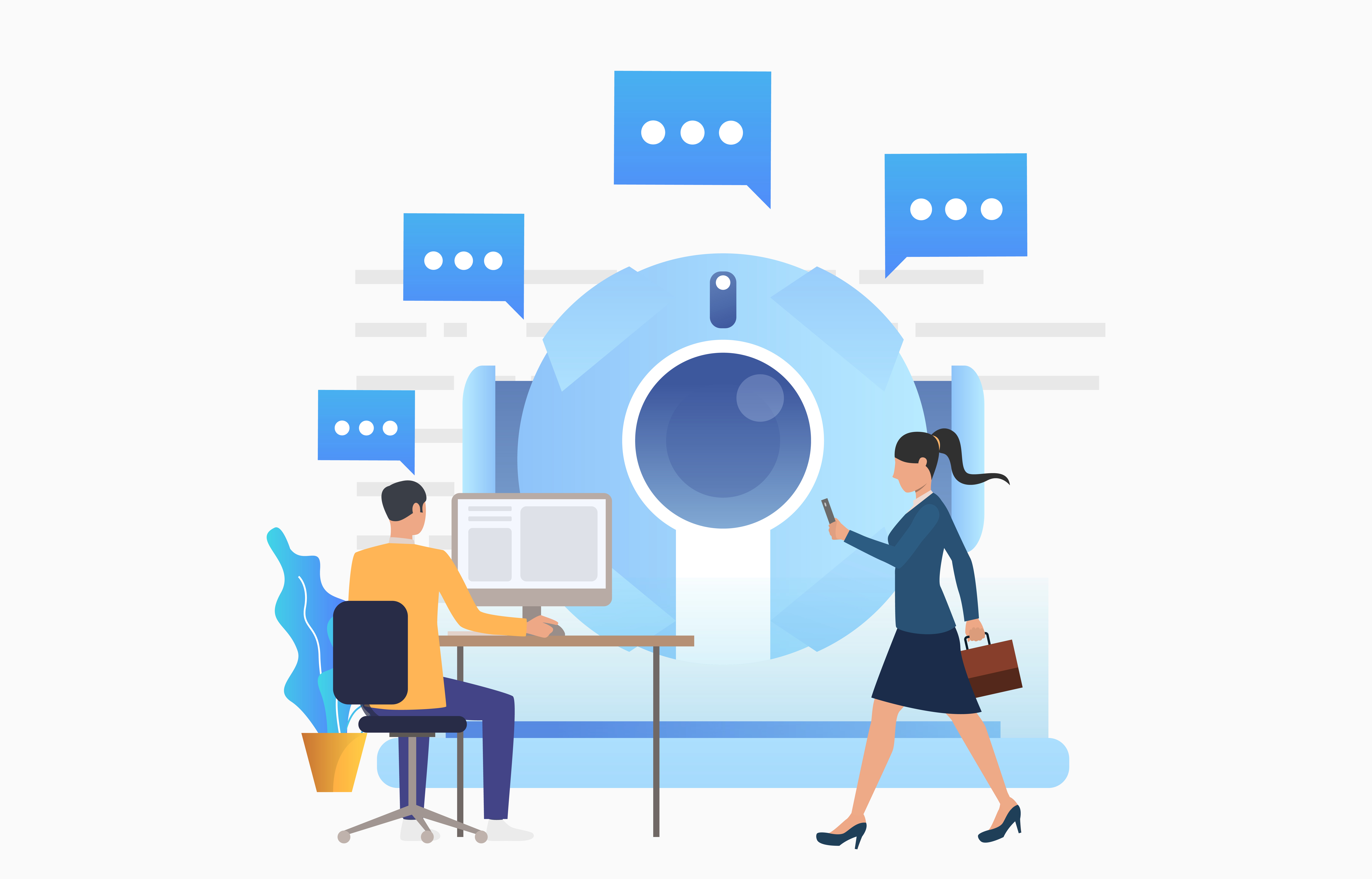In today's blog, we explore the profound impact of technology on HR over the past 50 years. From mainframes to generative AI, we'll uncover how each wave has elevated efficiency and enriched the employee experience.
Let's dive in!
The Tech Leaps Revolutionizing HR Efficiency
Technology has played a pivotal role in the evolution of human resources (HR), transforming it from a paper-based, administrative function to a dynamic, data-driven field.
Starting with the introduction of mainframe computers in the 1960s, technology has enabled HR teams to automate routine tasks, improve data management, and enhance communication. The rise of personal computers, the internet, and cloud computing have further accelerated this transformation.
Today, HR technology has evolved into a comprehensive ecosystem of tools that support every aspect of the HR function, from recruitment and onboarding to employee engagement and talent development. This has enabled HR teams to operate with greater efficiency, agility, and strategic focus, contributing to organizational success.
Use Cloud Systems and Analytics to empower HR
Cloud-based HR systems and analytics have emerged as game-changers, revolutionizing the way HR operates and delivers value to organizations.
Prior to cloud computing, HR systems were often expensive and complex to implement, limiting their accessibility to large enterprises with deep pockets. However, the advent of cloud technology has democratized HR software, making it affordable and accessible to businesses of all sizes. Cloud-based HR systems offer businesses a range of benefits, including:
-
Cost-effectiveness: Cloud-based solutions eliminate the need to purchase and maintain expensive hardware and software, reducing IT overhead and associated costs.
-
Scalability: Cloud systems can be easily scaled up or down to meet the changing needs of a business, ensuring that HR resources are always aligned with organizational growth.
-
Accessibility: Cloud-based systems are accessible from anywhere with an internet connection, enabling HR teams to work remotely and collaborate with colleagues from anywhere in the world.
-
Security: Cloud providers employ robust security measures to protect sensitive HR data, ensuring that it remains safe and compliant.
In addition to cloud systems, people analytics, the use of data and analytics to understand and manage the workforce, has become a critical tool for HR professionals. By analyzing HR data, organizations can gain insights into employee engagement, performance, and retention, enabling them to make data-driven decisions that improve business outcomes.
For example, analytics can be used to identify high-performing employees and develop targeted training and development programs to help them reach their full potential. Additionally, analytics can be used to assess the effectiveness of recruitment and onboarding processes, helping organizations attract and retain top talent.
The combination of cloud systems and analytics has created a new era of HR, one that is more efficient, data-driven, and strategic. By leveraging these technologies, HR teams can transform their organizations by improving employee engagement, enhancing talent management, and driving business success.





The Social Media Impact: Crafting an Engaging Employer Brand
In today's dynamic and competitive business landscape, employers are constantly seeking ways to differentiate themselves and attract top talent. Social media has emerged as a powerful tool for crafting an engaging employer brand, allowing businesses to connect with potential employees, showcase their company culture, and promote their unique offerings.
One of the key platforms that has revolutionized employer branding is LinkedIn. With over 830 million members worldwide, LinkedIn provides a vast and engaged audience of professionals seeking career opportunities. By establishing a strong presence on LinkedIn, companies can actively engage with potential employees, share their company's story, and attract top talent.
LinkedIn is not just a place to post job openings; it's a platform for storytelling. Businesses can use LinkedIn to create compelling narratives that showcase their company culture, values, and commitment to employee development. They can highlight achievements, share employee stories, and engage with industry experts.
By effectively utilizing social media, businesses can build relationships with potential employees, establish themselves as thought leaders in their industry, and attract top talent.
Here are some examples of how businesses are using social media to craft engaging employer brands:
- Sharing company news and updates.
- Highlighting employee accomplishments and contributions.
- Providing insights into company culture and values.
- Engaging with potential employees and industry influencers.
- Answering questions and addressing concerns.
By actively engaging with potential employees on social media, businesses can build relationships, foster trust, and create a positive brand image. This can lead to increased applications, higher employee engagement, and a stronger employer brand.
Generative AI and Chat GPT: The HR Tech Revolution Continues
The evolution of human resources (HR) technology has been on a continuous journey of innovation, and the advent of generative AI and Chat GPT marks the next transformative wave. These technologies have the potential to revolutionize the way HR professionals operate, enhance employee experiences, and optimize organizational outcomes. The integration of generative AI and Chat GPT into HR technology has the potential to:
-
Automate routine tasks: This will free up HR professionals to focus on more strategic and value-added activities, such as talent acquisition, employee development, and organizational strategy.
-
Personalize employee experiences: By understanding individual preferences and needs, these technologies can provide personalized training, development, and support.
-
Enhance employee engagement: Chat GPT can provide a more interactive and personalized experience for employees, making them feel more valued and engaged.
-
Optimize organizational outcomes: By automating tasks, providing personalized support, and enhancing employee engagement, these technologies can help organizations achieve their strategic goals.
As AI continues to evolve, it is likely to play an even more significant role in HR technology. HR professionals who embrace these new technologies will be at the forefront of the industry and will be well-positioned to drive organizational success.
This blog was inspired by the thought-provoking insights from HR Academy by 5Mins.ai. Dive into the world of HR at 5mins.ai for continuous learning.
- Get in touch
-
EN




